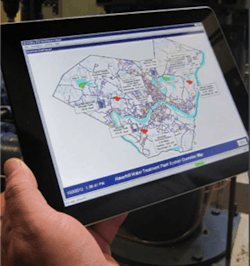With many companies motioning to reshore their operations in the wake of global supply chain disruptions, a number of automation technologies have become important tools helping companies navigate domestic labor shortages. However, while the integration of automation technologies has eliminated some need for unskilled labor, it has also created an increased need for skilled labor, placing many manufacturers in a difficult conundrum. According to the 2021 Manufacturing Talent study, conducted by the Manufacturing Institute and Deloitte, while 4.6 million manufacturing jobs are forecast to be created over the next decade, as many as 2.4 million of those positions are likely to remain unfilled due to the continuing skills gap.
Unfortunately, COVID-19 appears to have further exacerbated this issue. While manufacturing has recouped many of the 1.4 million jobs that were lost in the earlier days of the pandemic, about 570,000 jobs remain unfilled according to the Deloitte/Manufacturing Institute study. Moreover, even as the unemployment rate remains high, many respondents to the survey reported that finding the right talent is now 36% harder than in 2018, as many employees remain skeptical about returning to work.
Despite the additional workforce issues created by COVID-19, the pandemic also appears to have accelerated the deployment of technologies that could help to surmount it. In particular, remote access use has boomed as plant managers seek ways to keep production moving apace with fewer workers present on premises.
“What we’ve heard from our customers is that COVID-19 has accelerated the adoption of remote access technology because it’s become an absolute necessity for reasons of safety,” says Ranbir Saini, senior director of product management for automation products at GE Digital. “Even many smaller, single-site manufacturers are now adopting remote access because they see how hard COVID-19 continues to be and want to be prepared to better handle the next potential crisis from the get-go.”
While many companies initially installed remote access primarily to keep as many workers as possible out of their plants for social distancing purposes, the technology has proven to be a gateway to other beneficial functionalities, such as enabling the delivery of augmented reality training materials, which use digital twin data to give employees access to interactive, 3D schematics that can be overlayed on their field-of-vision to guide them through various work-procedures.
In addition, remote access technologies are helping aggregate equipment data into shared databases to create a single source of truth, as well as connecting distant subject matter experts to guide on-site employees through maintenance, repair, and operations tasks in real-time. This allows retirees, who are experts in a given plant’s systems, to easily shepherd new workers through difficult tasks—a key development at a time when getting these former employees to visit a physical location could be a hard sell.
According to Saini, such remote expert connections could eventually lead to a more consistent pipeline of knowledge that will not only help companies overcome the current skills gap but eliminate future knowledge loss as well.
“In our vision, this can eventually lead to the creation of standard operating procedures and central training for new people coming on board,” Saini says. “The whole idea is that once you have the infrastructure in place that remote access provides, you can start doing things like [equipment] deployment, [worker] training, and [systems] commissioning more centrally.”

